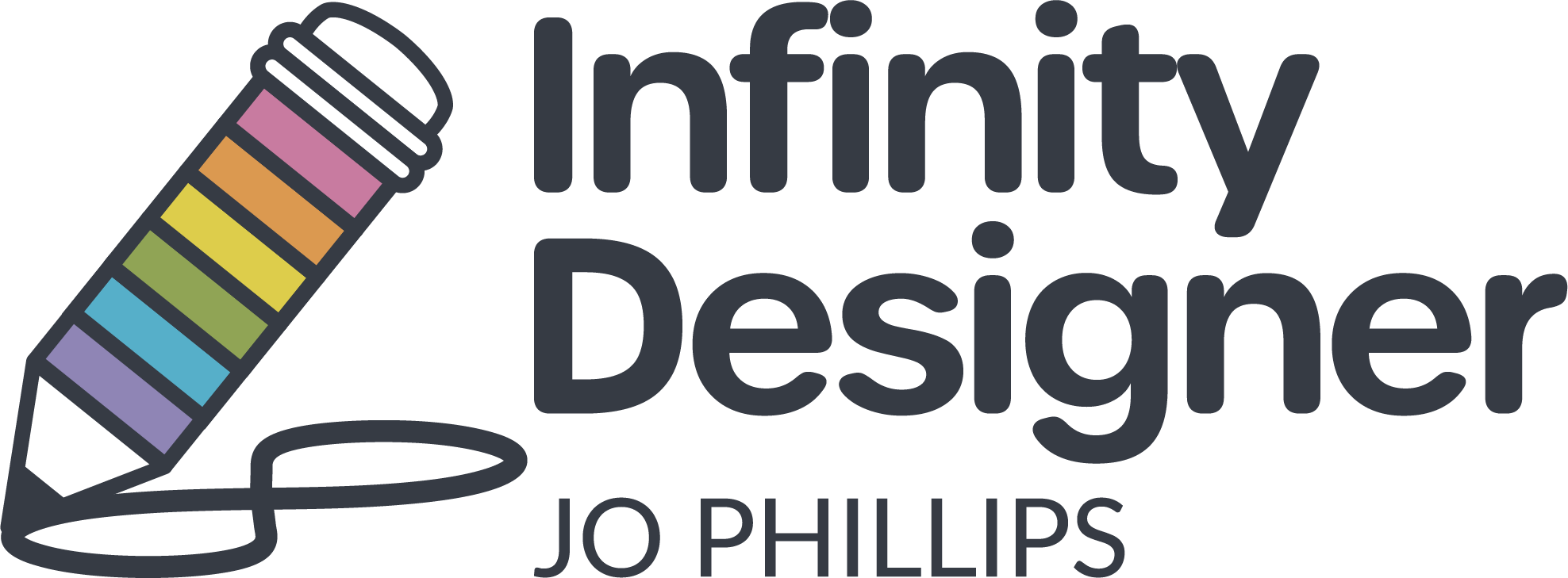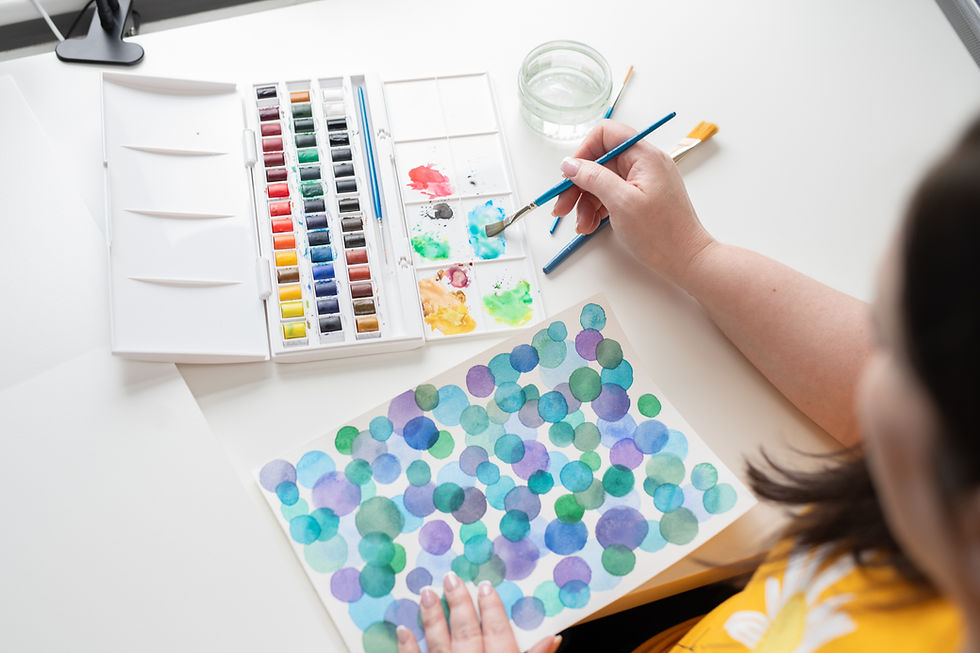Back to Pencil: Rediscovering Joy and Simplicity in Hand-Drawn Surface Pattern Design
- Jo Phillips

- Oct 6
- 5 min read
There’s something about the sound of pencil on paper that feels grounding. Gentle. Honest.
After years immersed in digital design; chasing precision, performance, and perfection, I’ve found myself reaching for my sketchbook more often.
The pencil.
The smudges.
The quiet.
It’s not about nostalgia.
It’s about reconnecting.

Why This Creative Shift Matters
This creative shift isn’t just about changing tools. It’s about reshaping how I work as a surface pattern designer, and how I connect with my clients, collections and myself. It’s about remembering what made me fall in love with design in the first place: the joy of mark-making, the freedom of not knowing exactly where a line will lead.
Here's a behind the scenes look at the beautiful process of coming back to pencil, and how this is further improving the creative process for me as a designer, and you as the client.
When Digital Became Too Perfect
I love digital design! Adobe Photoshop is my comfort zone. It's my toolbox for clean repeats, precise colour management, and clean, commercial-ready artwork. But as I began the journey into surface pattern design, something started to feel off and I realised I felt less connected with my creative spark. I felt I was trying too hard.
The designs were working...
But they weren’t always feeling.
And when your work is rooted in emotion, as mine always has been, that matters!
I realised I’d been tightening rather than trusting. Perfecting more than playing. I realised I was leaning into perfection more and more rather than enjoying the process.
Creativity, Neurodivergence, and the Need to Feel in Images
My journey with creativity has always been interwoven with my neurodivergence. Before my autism diagnosis, I didn’t have the language for why visual storytelling felt so essential to how I process the world.
Now, I do.
My designs are how I speak emotion. My hyper-empathy lives in every leaf, every texture, every quietly observed shape. If a pattern doesn’t feel aligned, I can’t connect with it and I know others won’t either. You can read about more in my blog about how my diagnosis journey impacts my creativity.
That’s why this shift mattered.
I stopped scrolling and started sketching.
I gave myself permission to draw, freely, joyfully and returned to The Sketchbook.
Making Space for Play, Not Perfection
And instead of returning to the heavy, black “proper” sketchbooks I’d been taught to use throughout my art education, I found myself reaching for something much simpler, thin, brightly coloured sketchbooks that felt light in my hands and cheerful on my desk. The kind of books that say “play here” rather than “prove something.”
They offer me a sense of quick accomplishment, and that really appeals to my ADHD brain. There’s something so satisfying about finishing a page, or even a whole book, without the pressure of it being perfect or portfolio-worthy. Just colour, paper, and possibility. And the opportunity to buy another sketchbook, just round the corner. And that shift, in format and mindset, has helped me create more freely than I have in years!
The Joy of Hand-Drawn Surface Pattern Design
Returning to the pencil felt like a deep exhale. I wasn’t creating for a portfolio, or for a deadline, or even for a product. I was just making marks. Exploring pencil sketch patterns. Observing line, light, and shape.
Here’s what I’ve learned:
1. Mistakes are part of the magic
That slight wobble in a hand-drawn line? That’s texture. That’s character. That's honesty. It's human.
2. Slowness brings clarity
Sketching by hand allows for more considered composition. I notice more. I have time to reflect. I adjust more intentionally.
3. Emotion becomes medium
Each pencil line holds a moment. You can feel it. Every hand-drawn floral, every leaf or line, holds something of that moment.
This isn’t just about how a pattern looks.
It’s about how it feels.
It’s about honesty, presence, and the quiet emotional thread that connects the maker to the viewer.

Pencil Sketch Patterns in a Digital World
Of course, I still digitise my work. Pencil sketches are scanned, refined, and translated into seamless repeats using my usual digital workflow. But the starting point has changed and it’s made everything feel softer, slower, and more emotionally grounded.
This process has started shaping my newer collections. I’ve been experimenting with:
1. Organic pencil motifs
Hand-drawn elements that bring warmth, movement, and a distinctly human touch to each pattern
2. Botanical drawings
These drawings form the heart of many of my patterns, capturing natural rhythm and softness in every hand-drawn line.
3. Playful pencil-drawn animals
Pencil-drawn animals with playful charm and quiet individuality, each one capturing a moment of character and curiosity on the page.
These are patterns with stories woven into their lines. They’re designed to connect not just visually, but emotionally.
An Artist’s Creative Shift (And What It Taught Me)
This creative shift wasn’t planned. I didn’t wake up one morning and declare I was “going back to pencil.” It was more of a quiet pull. A soft voice saying, “Come home”.

Here’s what it’s teaching me
● That pressure can disguise itself as productivity
● That creativity needs space to breathe
● That what feels joyful to create often resonates most deeply with others
I’ve also learnt that it’s okay to switch things up! That changing direction doesn’t mean starting over... it means realigning.
Sometimes the most honest, joyful work begins when you let go of what you thought you should be doing, and follow what feels true instead.
What This Means for Clients and Collaborators
If you’re a buyer or brand looking to license surface pattern designs that feel honest, grounded, and emotionally resonant, this shift may matter more than you think.
In a world of slick digital polish, hand-drawn elements whisper something different.
They say: this was made with care.
They invite connection, not just consumption.
When you work with me, you’re not just licensing artwork. You’re licensing stories, You’re licensing intention. you’re connecting with a unique perspective. My creative process is slower, more intentional, and shaped by human emotion. It begins, quite literally, at the tip of a pencil. These designs may start as simple sketches, but they’re created with people in mind and made to help your customers feel something real.
Let’s Create Something Meaningful
If you’re drawn to hand-drawn surface design or looking for patterns with depth, texture, and warmth, I’d love to connect with you.
● Book a video call to explore licensing options
● Request access to my latest sketch-led collections
● Or just message me to start a creative conversation
Let’s create something thoughtful, beautiful, and full of feeling, right from the tip of a pencil.






Comments